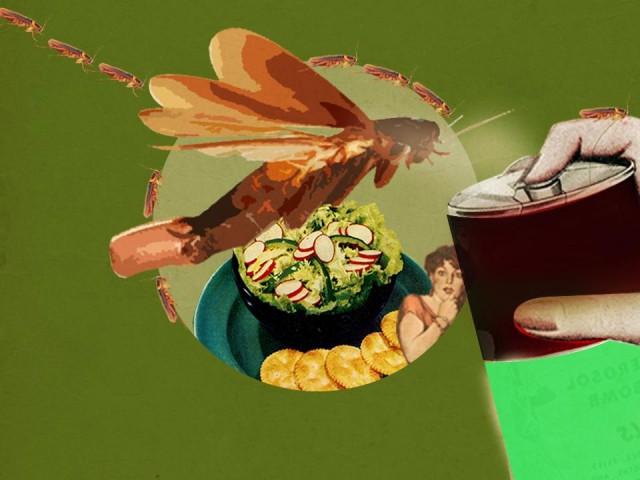Why cockroaches fly and other ipis analysis
Despite its diminutive size, the cockroach is anything but small-time.
The cockroach tends to be the go-to metaphor for resilience, and for good reason. As far back as the Carboniferous period — almost 360 million years ago — cockroaches twice the size of today’s sepia-colored scuttlers were already scurrying across prehistoric swamplands.
And if that weren’t testament enough to their staying power, present-day roaches are remarkably hard to kill. These insects have been observed to withstand forces of up to 900 times their own body weight due to their natural self-compression abilities. In fact, the roach’s ability to squeeze into the tightest crevices is rivaled only by the octopus’s and the roach moves much faster to boot.
None of this information is helpful, of course, when you see one of these six-legged, wide-winged horrors making a beeline for your face.
Indeed, you’d be hard-pressed to think of any other creature that, with but a flap of its wings, can transform the humble tsinelas into a lethal weapon, make it instantly rain insect repellent inside whichever room it managed to crawl into, or reduce even the most hardened specimen of muscle-bound machismo to a skipping, shrieking mess.
As a society, we hate cockroaches so much that describing Manila as an unsavory place that, among other things, “smelled of cockroaches” was enough to get actress Claire Danes banned from the Philippines two decades ago — 'memba that episode?

Need a wellness break? Sign up for The Boost!
Stay up-to-date with the latest health and wellness reads.
Please enter a valid email address
Your email is safe with us
This begs the question, though: Why do we hate and fear cockroaches so much? They’re not even the most lethal kind of insect out there — that dubious distinction belongs to mosquitoes — so what is it about them that makes humanity's collective skin crawl?
Pest profile
There are over 4,500 species of cockroaches in the world, but only a handful of these are considered pests — close to 30, to be a bit more specific.
The types of roaches most commonly found in Filipino residential houses (and nightmares) are the American (Periplaneta americana) and German (Blattella germanica) varieties. The reddish-brown American cockroach is the largest species among the common roaches, growing up to an average length of 1.6 inches. Meanwhile, the German cockroach is closer to tan in hue, and is about half the size of its American cousin.
Whether they’re on the ground or in the air, we tend to find roaches equally repulsive. They skitter across the floor with incredible speed; it’s no surprise that most of these species prefer to stay grounded.
Interestingly, not all cockroaches have wings. Furthermore, among the winged ones, only a small percentage actually use them for flying.
While both American and German cockroaches have wings, it is more common to see the former in flight. (This also makes it the one you’re more likely to imagine when someone screams, “Ipis!”) What they do isn't even actual flight; it’s more like a very crude sort of glide, which explains why they don't seem to be very good at navigating and staying airborne.
So if that’s the case, then why do they even bother taking off?
While it is reasonable to assume that some roaches fly as a defensive measure or to look for food, researchers believe that it’s usually just because of the heat. "Cockroaches, like all insects, are cold-blooded, meaning their activity rate increases with temperature," according to Prof. Jules Silverman, an entomologist at North Carolina State University.
“In hot steam tunnels, something with the temperature and the humidity encourages them to fly,” shared Ken Schumann, an entomologist at Bell Environmental Services. "When it's warm and steamy [,] that seems to be what they like."
Unfortunately for us living in the Philippines, “warm and steamy” tend to be the norm. And in the case of cockroaches, with great heat comes great activity.
Fear factor
Our fear of cockroaches does seem to be a bit disproportionate to their actual threat level, though.
Sure, these filthy insects are capable of spreading diseases and harmful bacteria as they zip around the house and leave their waste behind. But, unlike mosquitoes, they aren’t disease vectors, meaning they aren’t actual carriers of parasites and pathogens themselves. Plus, they don’t feed on our blood, either.
So what is it about cockroaches that has managed to instill katsaridaphobia — the fear of these little critters — in millions of people all over the world?
According to Professor Jeffrey Lockwood of the University of Wyoming, the answer lies in our DNA — our disgust reflexes, to be more precise. “Fear and disgust are the two universal negative human emotions. One signals immediate danger, and one signals the potential for disease or contamination.”
Think about it: The simple act of observing a cockroach is like ticking off items on humanity’s list of anxiety triggers. Sneaky, speedy and skittery? Check.

Oily, filthy, and greasy? Check.
Foul-smelling (due to the uric acid they store in their bodies)? Check.
Contortionist abilities? Check.
Irregular and unpredictable “flight” patterns? Check.
That sickening “crunch” sound that follows when you squish or step on one? Check, check, check.
Want some solid advice? Stock up on anti-cockroach bio-repellent gel, clean your rooms regularly, wash your dishes promptly, and don’t get food crumbs on your bed. Oh, and invest in a good, sturdy pair of tsinelas. — LA, GMA News

Need a wellness break? Sign up for The Boost!
Stay up-to-date with the latest health and wellness reads.
Please enter a valid email address
Your email is safe with us

Miss Universe Organization withdraws title from Miss Universe 2024 3rd runner-up Suchata Chuangsri of Thailand

Doktor, natagpuang patay at may saksak sa loob ng SUV sa Quezon City

Probinsyano na ni-recruit na gawing construction worker sa Maynila, niloko at iniwan







